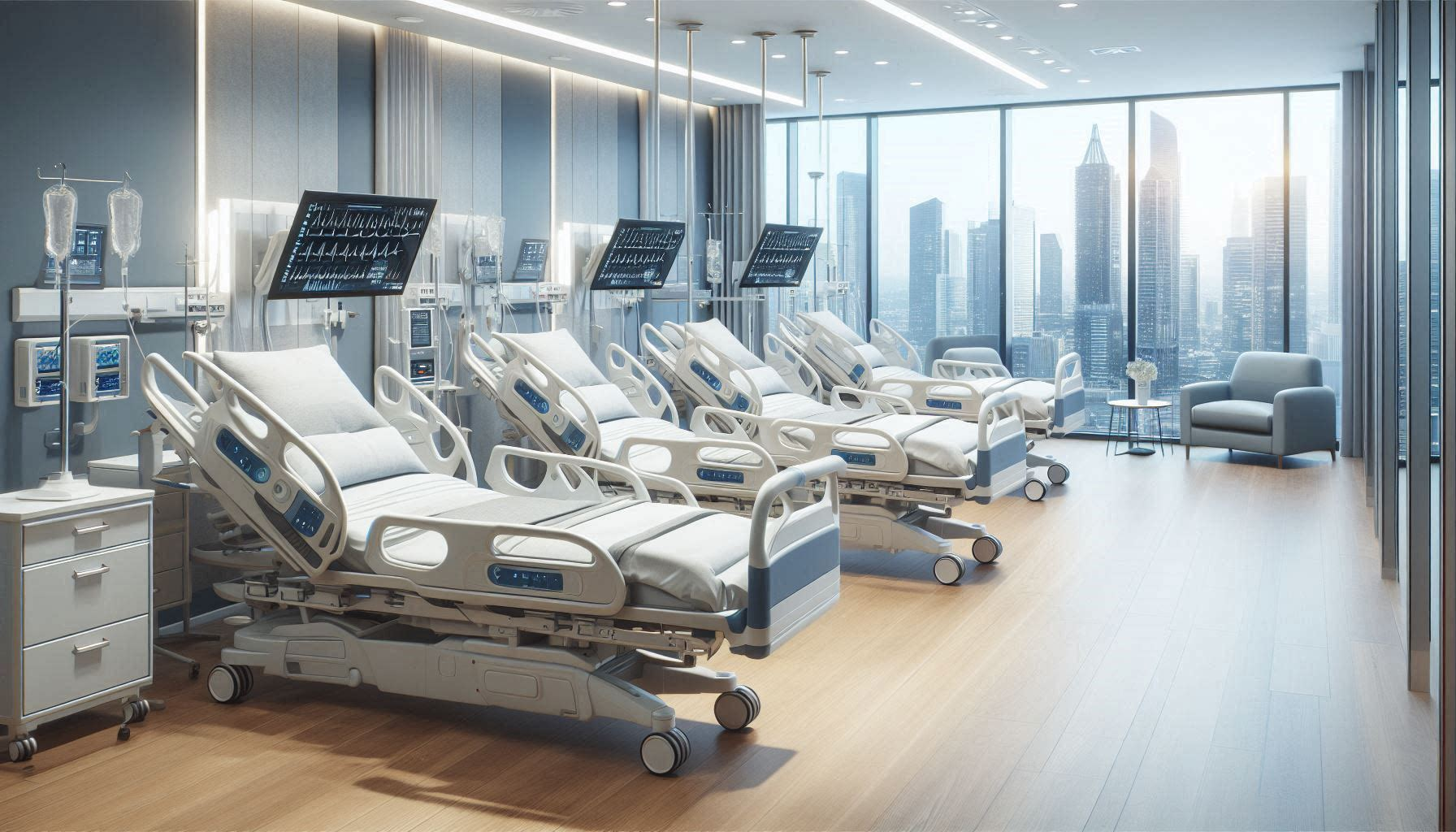In the ever-evolving landscape of healthcare technology, one question continues to spark debate among hospital administrators, healthcare providers, and policymakers alike: Are high-priced electric ICU beds truly worth the investment? As we delve into this complex issue, we’ll explore the factors that influence electric ICU bed prices, examine the potential benefits, and weigh them against the considerable costs.
The Price Tag: Understanding Electric ICU Bed Costs
Several factors contribute to the high cost of electric ICU beds: Advanced Technology: These beds incorporate sophisticated electronic systems for precise positioning, weight monitoring, and patient data collection. Durability and Materials: Built to withstand continuous use in high-stress environments, electric ICU beds utilize premium, medical-grade materials. Research and Development: Ongoing innovation in bed design and functionality requires substantial investment from manufacturers. Regulatory Compliance: Stringent medical device regulations necessitate rigorous testing and certification processes, adding to overall costs.
Beyond the Price: Potential Benefits of High-End Electric ICU Beds
While the electric ICU bed price may cause sticker shock, proponents argue that the benefits far outweigh the initial investment. Some of the potential advantages include improved patient outcomes, enhanced staff efficiency, data integration and monitoring capabilities, longevity and reliability, and increased patient comfort and satisfaction.
Improved patient outcomes can result from advanced positioning capabilities that help prevent complications like pressure ulcers and ventilator-associated pneumonia. Some studies suggest that high-quality ICU beds may contribute to reduced length of stay and improved recovery rates.
Enhanced staff efficiency is achieved through electric controls and integrated weighing systems that save time for nurses and reduce the risk of injury from manual patient handling. This efficiency can lead to better patient care and potentially lower staffing costs over time.
Data integration and monitoring features offered by many premium electric ICU beds allow for seamless integration with hospital information systems, enabling real-time patient monitoring and data analysis. This capability can support early intervention and more personalized care strategies.
The Cost-Benefit Analysis: Making an Informed Decision
When evaluating whether premium electric ICU beds are worth the investment, healthcare decision-makers must consider several key questions: What is the expected return on investment (ROI) in terms of patient outcomes and operational efficiency? How do the long-term maintenance and replacement costs compare to lower-priced alternatives? Will the advanced features genuinely enhance patient care and staff productivity in your specific healthcare environment?
To make an informed decision about investing in high-priced electric ICU beds, consider conducting a thorough needs assessment of your ICU department, researching and comparing different models and manufacturers, seeking input from frontline staff, requesting detailed cost breakdowns and ROI projections from vendors, and exploring financing options.
The Bottom Line: A Nuanced Approach to Value
While the high price of premium electric ICU beds may initially seem daunting, the potential benefits in terms of patient outcomes, staff efficiency, and long-term cost savings cannot be overlooked. However, the decision to invest in these advanced medical devices should not be made lightly.
Ultimately, the value of high-priced electric ICU beds will depend on the specific needs and circumstances of each healthcare facility. By carefully weighing the costs against the potential benefits and considering alternatives, decision-makers can make informed choices that balance fiscal responsibility with the pursuit of excellence in patient care.
As healthcare continues to evolve, so too will the technology that supports it. The question of whether premium electric ICU beds are worth the investment may not have a one-size-fits-all answer, but by approaching the decision with diligence and critical analysis, healthcare leaders can ensure they’re making choices that best serve their patients, staff, and bottom line.






